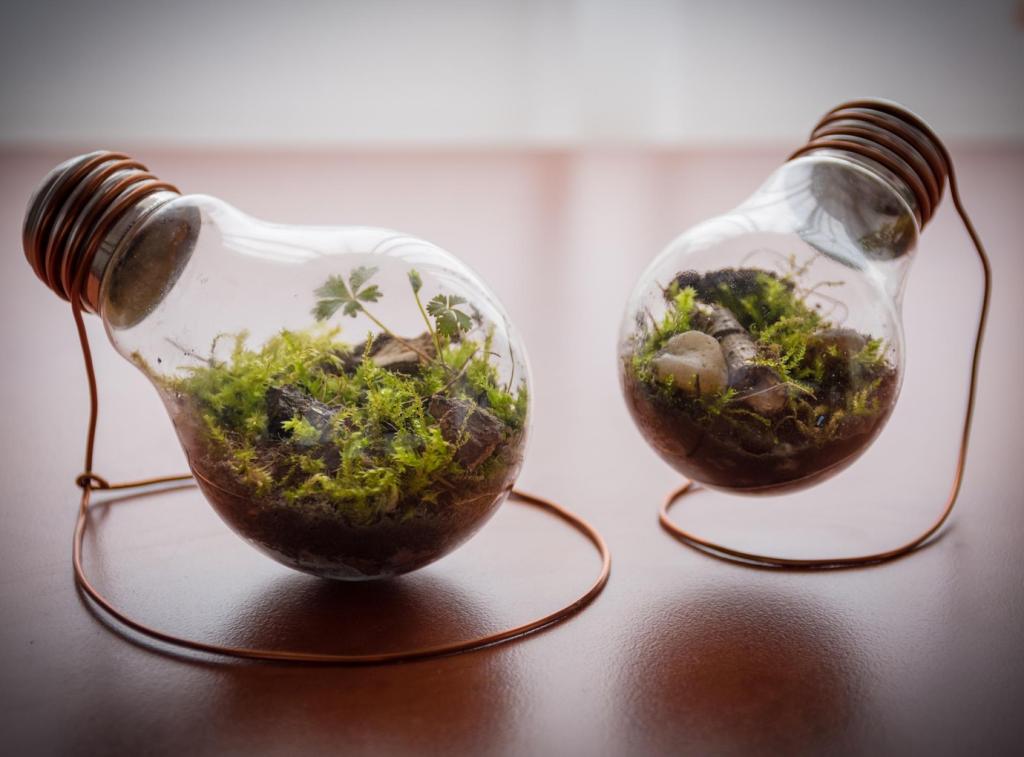
Live Light: Minimalist Designs for Sustainable Living
Chosen theme: Minimalist Designs for Sustainable Living. Step into a calmer, lower-impact way of life where every object has purpose, every space breathes, and every choice honors the planet. Subscribe for weekly inspiration, real homes, and actionable, earth-friendly design moves.
Start With Less, Live With More Intention
The 12:12 Method for Conscious Letting Go
Set a 12-minute timer, choose 12 items, and ask three questions: Do I use it? Love it? Can it serve someone else better? Track donated weight monthly, celebrate landfill diversion, and share your wins to inspire a friend to begin.


Eco-Smart Donation and Resale Paths
Map where each category belongs: textiles to repair-led charities, electronics to certified e-waste, duplicates to neighborhood Buy Nothing groups. Photograph items, write honest condition notes, and keep a simple spreadsheet so nothing returns as clutter.


Sustainable Materials, Minimalist Aesthetics
Bamboo and cork regenerate quickly, feel warm underfoot, and pair effortlessly with restrained forms. Ask suppliers for harvest data and adhesives used. A single material, repeated, simplifies maintenance and lowers visual noise throughout your home.
Sustainable Materials, Minimalist Aesthetics
Paints, sealers, and adhesives can quietly pollute. Choose low- or zero-VOC options, ventilate well, and let pieces cure before use. Fewer surfaces mean fewer products, fewer fumes, and fewer headaches—literally and figuratively.
Layouts That Breathe
The Three-Point Flow: Kitchen, Table, Balcony
Align prep, dining, and outdoor air along one axis. Sliding stools tuck under a narrow table, herbs thrive by the light, and dishes move in a straight line. Less shuffling equals less energy and calmer meals.
Furniture on Legs, Not Bulk
Choose raised sofas, open-base beds, and slim consoles. Visible floor makes rooms feel larger and speeds up sweeping, saving water during cleaning. Two versatile pieces beat five specialized ones, every single day.
Storage You Don’t See, Habits You Do
Hide rarely used items high, daily tools at waist height, and nothing on floors. Label bins by activity, not object. When routines guide placement, tidying becomes muscle memory, not a weekend project.

Daylight Zoning and Reflective Surfaces
Bounce natural light with matte whites and pale woods, then park high-demand tasks near windows. A simple mirror placed opposite a casement can lift winter mornings, cut lamp hours, and improve your mood dramatically.

Appliances That Earn Their Footprint
Keep only what works hard daily. A compact induction hob beats a sprawling range. Choose repairable models, register warranties, and schedule filter changes. Fewer machines humming means fewer watts and clearer conversations.
Mindful Consumption and Capsule Living
Every arrival prompts a departure. When a new mug appears, an old one goes to a neighbor. Keep a small outbox near the door, and schedule a monthly drop-off. Accountability transforms good intentions into routine.
A 38 m² Home That Grew Bigger
After removing a seldom-used bookshelf, Maya rotated her table toward the window and gained a sunny studio vibe. Guests noticed the light first, not the size. She saved for months by simply enjoying staying in.
The Heirloom Stool That Anchored a Room
One oak stool, sanded and oiled, became seat, bedside, and plant stand. Repair marks tell family stories. When objects multitask and carry memory, the urge to acquire fades, and spaces feel lovingly complete.
